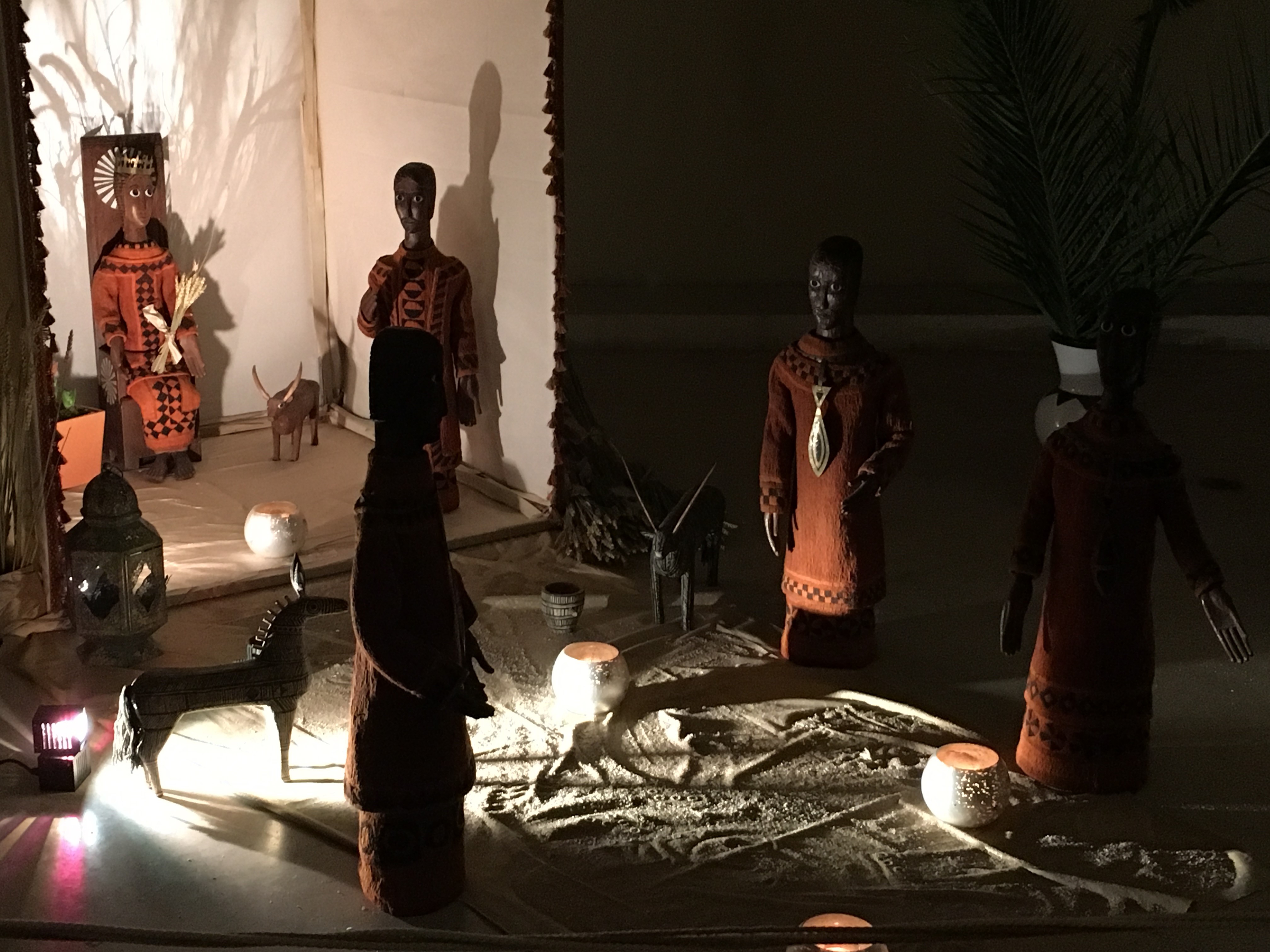
I would never have found the Jesuit Church of St. Ignace in the sixth arrondissement if I hadn't snuck into the high-end department store, Le Bon Marché, which is the neighbor that dwarfs the church. I knew about taking care of my spirit while at a large international conference in a large city, in which conference participants seemed constantly to be talking about the end of the world as we know it.
Le Bon Marché is minutes from the apartment I have rented here for the duration of my focus on the end times. It is garbed in purple light and gives the word gaudy new meaning. Given the enormous security here, the swank department store is seriously protected by smiling guards who request a peek into your purse. The church, on the other hand, though crowded at the Saturday night service to pray for Pope Francis and the climate conference, didn't want to peek into my purse. It wanted to peek into my soul and was willing to give me a free seat in exchange.
After my walk through Le Bon Marché and a few squirts of free Chanel No. 5, I strolled north a block and saw the sign. Modest, without either purple or much of any other kind of light, the permanent sign said, Eglise Saint-Ignace. The less permanent sign said Taize Service Saturday night, 5 December, 20:30 which is the interesting way Europeans tell time. My heart jumped for joy. No train to take. No plane to make. No more security checkpoints to pass. Convenience was as high as spirituality on my mind.
I went into the church to check it out. It is compulsory to walk in and out of a lot of churches when you are in Europe, part of the overall self-improvement we Americans feel when abroad. To my right was a half-life-size crèche with African shepherds and wise men, those first scientists, an African baby and some sheep with very long legs. As someone who collects crèches from different nations, in hopes that Jesus will prevail artistically if not theologically, I counted my trip already consummated.
Imagine my surprise when going in further to the large gothic nave, I discovered the center empty. The interior had been rearranged into a wide elliptical space. The moquette carpet on the floor, which will feature later in this story, was clean, making a place suitable for sitting. The wooden cross was portable and you could tell it had been moved around a lot. I have always liked Jesuits and St. Ignatius, (1491-1556) the Catholic saint who knew how to question empire intelligently. In fact, I have often thought that if I wanted to spend the rest of my life convincing Catholics to ordain women, I'd start with the Jesuits and apply for status with them myself. Why? Because they are smart enough and strategic enough to still question empire.
I had wanted to spend the weekend praying for the conference anyway. Enough policies, enough words, enough politics. It was time for me to pray. My spirit needed more than its usual security system, something larger than its usual guards. Plus I had Googled the parish and knew that this consumer of religious services (me) would be pleased with this service. (I read "The Mass that Takes its Time," by Jean-Marc Furnon, who was chaplain there from 1999 to 2007 and instituted a long time of silence, lectio divina, youthful participation. Known as MT, this mass has long attracted a youthful cohort.)
We arrived a little late on Saturday night, for reasons that you can blame on Bill McKibben. We had gone east to a Paris suburb called Montreuil, where there was supposed to be a 350.0rg mock trial of Exxon Mobil. We couldn't find it but instead found the entire people's alternative conference and had way too much fun to get back to church on time.
Anyway, we went to the church, where there was standing room only. Hundreds of "young people," the kind that can cross their legs and sit for a long time on the ground, were snuggled together on the rug. The half dozen or so Jesuits in white robes are kneeling, again with a flexibility that was not just spiritually impressive. The candles were lit. The contralto joined the tenor who joined the guitar, backed up by the violin, in "Laudate Dominum." That was followed by "Alleluia 20," then "Bless the Lord," then the "Kyrie 18." We got seats. When my favorite Taize song came on, "Jesus remember me," I had my first good cry for the planet, the pope, the people and me. "Ubi Caritas" and "Misericordias Domini" and "Nada te turbe" closed us out.
Most important was the motion of the cross. Four strong young ones -- the demographic of COP21 -- picked up the cross, turned it upside down and turned it into a table, which they then knelt before and kissed. Then the robed Jesuits did the same. Then people from all four corners of the earth, I mean the chapel, stood quietly and slowly, and did the same. Then I did the same. My Jewish husband held my coat. He had never been to a Taize service and spent most of it overwhelmed spiritually. Then from the north, the south, the east and west of the sanctuary people lined up to do the same. No bread, no wine, only a cross to kiss.
Pope Francis was adequately prayed for. The planet will be all right. Nada Me Turbe. Not even the so-called Bon Marche.
[Donna Schaper is senior minister of Judson Memorial Church in New York City.]
Editor's note: Want more stories from Eco Catholic? We can send you an email alert once a week with the latest. Just go to this page and follow directions: Email alert sign-up.




